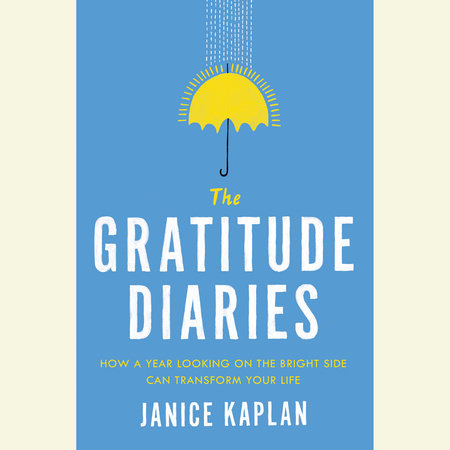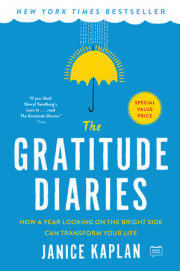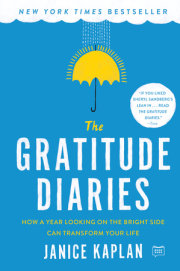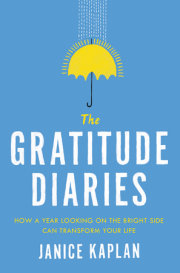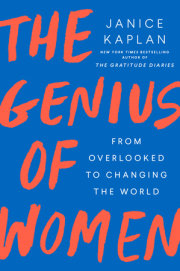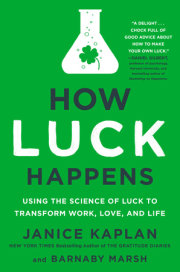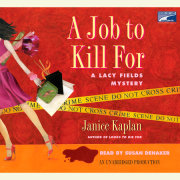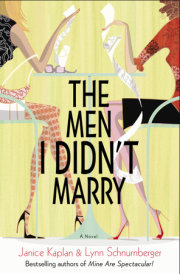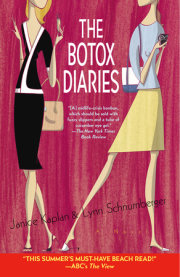Given that I am working on a new project about gratitude, I should have woken up on this early April morning to sunny skies, singing birds, and friends gathered in my living room singing “Kumbaya.”
Instead, everything that could go wrong did.
But somehow, I kept seeing rays of sunshine.
To start, my old Volvo wouldn’t spark and jumper cables had no effect. The neighbor who came over to help saved the day by driving me to the train station, twenty minutes away. I got to the city and stepped onto the rainy, windy sidewalk just as a bus raced through a huge puddle and sent a thick stream of muddy water all over me.
“Yuuck!” I screamed, though my language might have been a bit more colorful.
A few passersby clucked in sympathy, but I didn’t want to go to my important meeting looking like a survivor from a Tough Mudder race. My favorite J.Crew was just a few blocks away, so I dashed over, quickly bought a bold-print skirt, and changed in the fitting room.
I got to my meeting on time, but the CEO I had come to see had a fake tan and extremely overmoussed hair. He texted while I talked and managed to look up only at the end. “Hey, you look hot in that skirt,” he said.
Since I was pitching a project, not cruising Match.com, I should have been furious. But instead, I laughed and told myself I’d been saved from working with a man who spent more on hair products than I did.
I went to have coffee with my best friend, Susan, whom I have known since we met in summer camp at age eight. She is intensely loyal, fiercely critical, and relentlessly blunt.
“You must be miserable,” she said when I outlined my day.
“Not really. I’m trying to be positive.”
“How can you be positive about a dead car?”
I took a deep breath. I could do this. “The car was fourteen years old and had 150,000 miles on it. I never expected it to last this long. More important was that I have a nice neighbor who came to help.”
“Yeah, that was good,” Susan admitted. “How about getting soaked on the sidewalk?”
“Look at the funny side. The idiot CEO complimented my skirt. And think how lucky I am that I could buy a new outfit without breaking the bank. “
Susan dumped two packets of Splenda into her coffee and stirred furiously. For years she’d heard me gripe about needing more money, so this appreciating what I had was a switch.
“I’m your best friend. You can bitch and complain all you want.”
“I don’t feel like complaining,” I said, surprising myself as much as her. “I can’t change what happened, so it feels good to change how I think about it.”
Susan took a long sip of coffee. She has an ambitious, hard-driving nature. Though inordinately successful at work, Susan is often stressed, pressed, and occasionally depressed. Like all of us, she gets so busy concentrating on what she wants that she forgets to be happy for what she has. I worried my good spirits might grate on her. But she just raised an eyebrow.
“If this is that gratitude stuff you’ve been working on, I think I need it. How do I sign up?”
It was time to share my secret. So on the top of a napkin, I wrote the heading Three Reasons I’m Grateful Today. Then I pushed the napkin across the table and handed Susan a pen.
“Fill it in,” I said.
Susan stared at the napkin for so long that I finally took it back and crossed out Three Reasons and changed it to One Reason.
“We’ll start easy,” I said.
That was exactly what I had done a few months earlier. I now knew that writing down one thing every day that made me grateful could change my attitude about everything else. A glowing sunset. A good friend’s hug. The first hint of spring.
One thing.
Who can’t do that?
PART ONE
MARRIAGE, LOVE, AND FAMILY
Let us be grateful to the people who make us happy; they are the charming gardeners who make our souls blossom.
—Marcel Proust
CHAPTER 1
Grateful to be starting my year of living positively
Happy to learn that gratitude can lower stress, improve sleep, and make me happier
Lucky to have a pretty journal that I will fill with only good thoughts
My desire to live gratefully started on New Year’s Eve, at a few minutes before midnight, when I stood at a party clutching a glass of champagne with a plastic smile pasted on my face. I knew I should be counting my blessings, but instead, I was counting the minutes until I could leave. My feet hurt from the excessively high-heeled shoes I was wearing and my head throbbed from the loud music that had been blaring all night. I had on a little black dress that was just a little too little, and I couldn’t wait to get home and take off the Spanx.
A TV in a corner of the room blasted New Year’s Rockin’ Eve, and as I watched people carousing in California, whooping it up in Washington, and being boisterous in Boston, I wondered if everybody in the country was having a better time than I was. Or maybe they were just better at faking it.
In New York, the million or so revelers gathered in Times Square let out a huge roar as the ball began to drop. Since it was twenty degrees outside and they had been corralled in metal pens all day with no porta-potties nearby, I understood why they were eager for midnight. Ringing in the New Year would be a great relief, in every way.
The Waterford ball finished its descent and the LED lights flashed the new date amid much horn blowing and confetti flying.
“Happy New Year!”
My husband, Ron, gave me a brief smooch and we clinked glasses.
Now that the anticipation was over, nobody seemed quite sure what to do. The TV showed an instant replay of the ball dropping, as if it were a moon landing or the final touchdown at the Super Bowl. Standing near the bar, I saw a woman pouring herself another glass of champagne. Her mascara was smudged and tears were streaking down her cheeks.
“Are you okay?” I asked her.
“No,” she said, rubbing her eyes. “I hate New Year’s. Why pretend anything is going to be different just because a ball dropped? Midnight came without any glass slipper to turn me into a princess.”
I decided not to discuss the subtler points of Cinderella at midnight (that’s when she dropped the glass slipper and stopped being a princess, my friend) and hurried away. But her question lingered in the air. What would be different? We celebrate New Year’s with high hopes and crazy expectations—which may be why a lot of us feel so uncomfortable. (The Spanx don’t help either.) But she was right that life wasn’t going to improve just because the calendar flipped.
Objectively, I knew my life was good—I had two terrific sons and a handsome husband, an interesting career and close friends. But like many people, I often focused on the negatives of life instead of the pleasures. The last twelve months had been perfectly okay, but nothing thrilling enough to make me want to put on a funny hat and dance in the street. I tried to picture myself back in this spot next year. What would make me feel happier the next time the ball dropped than I did right now? I supposed in the coming months I might win the lottery, move to a Hawaiian paradise, or write a bestseller. But would any of that really work? I could already hear myself grumble that I had to pay huge taxes on the winnings, the sun on Maui was too hot, and six weeks on the New York Times list wasn’t enough.
If the coming year was like most, some good things would happen and some not so good. I had recently overseen a big national survey on gratitude and been on the Today show to talk about it. The survey had started me thinking and researching a lot about positive attitudes. So I knew that how I felt about the twelve months ahead would probably have less to do with what actually happened than with the mood, spirit, and attitude I brought to each day. It wasn’t the circumstances that mattered but how I responded to them. I could passively wait for the wonderful to occur—and still find something wrong. Or I could accept whatever events did come my way and try to appreciate them a little more.
I went to collect my coat and saw the woman-who-wasn’t-Cinderella getting hers, too.
“I hope it’s a good year for you,” I said.
“It won’t be,” she said.
“Maybe you can make it better. That’s a really pretty coat, by the way,” I said as she pulled on a brown shearling.
“It’s old. I wish I had a new one. Yours is nicer.”
I could have pointed out that mine was equally aged and had a stain on the sleeve, but I stopped myself. What had I just decided about having the right mood, attitude, and spirit? My coat was suddenly a symbol for my whole life—if I had it, I should appreciate it. I didn’t want to be the Ungrateful Lady.
“It’s warm and cozy,” I said brightly, putting my hands into the pockets. Whoops, one finger slid into a hole. But neither holes nor stains nor ratty hem was going to stop me now. If I planned to be happier by next New Year’s, I had to start working on my attitude right now.
—
The next morning, I woke up earlier than planned, the mild winter sunlight streaming in around the pleated shades in our Midtown Manhattan apartment. After many years living in the suburbs, we had moved to the city just a couple of years ago, and I loved our large windows and wide river views. (My grown-up sons joked that we’d found the one part of the city that felt like the suburbs.) Weather reports predicted blizzard conditions moving in, and it had already been a snowy and cold winter. But I made myself stop and enjoy the bit of sunshine breaking through the steel-gray skies.
Hearing a clattering in the kitchen, I threw on jeans and a T-shirt and skipped out to where Ron was making breakfast. It was just the two of us this morning, but he seemed to have enough ingredients spread across the counter to feed the cast and crew of a James Cameron epic. I gave him a little kiss and said good morning.
“Do you think I’m ungrateful?” I asked.
“You don’t have to be grateful for French toast,” he said, flipping a piece that was bubbling on the stove. “I like making it.”
“I mean it bigger than breakfast. Do you think I appreciate . . . life?”
“Oh, life.” He stared into the frying pan, willing it to cook up a little homespun wisdom. “You probably don’t appreciate what you have as much as you should. You pay too much attention to what’s wrong rather than what’s right.”
“I’m going to try to be more grateful from now on,” I said. “It’s my plan for the year. I think it will make me happier. Maybe make us both happier.”
“Worth a try,” he said.
And that was that. Resolution stated and we’d see what happened next.
Ron put the spatula down and bits of hot grease dripped onto the counter. I started to say something, then bit my tongue. If I wanted to begin appreciating rather than complaining, I’d better ignore the puddle of butter gathering on the granite and concentrate on the warm smells of cinnamon and vanilla wafting through the room. I closed my eyes and reminded myself how lucky I was to have a husband who got up early to beat the eggs, soak the bread, and fry ’em all up. Better keep it to myself that I’d much prefer plain oatmeal.
Later that afternoon, I headed over to the grocery store, and as I pushed a cart along, a familiar Joni Mitchell song, “Big Yellow Taxi,” was playing. I started humming along with the lamenting lyrics about how it always seems that you don’t know what you’ve got ’til it’s gone. Music playing in the frozen-food aisle isn’t usually life changing, but I took it as a sign that I was on the right course. Hundreds of musicians from Bob Dylan to Counting Crows have recorded Mitchell’s song because in any musical style, the message hits a chord. It happens too often that you have something terrific right in front of you but don’t realize it until the lover is gone, the moment is past, and the flowers are wilted.
Standing there holding a container of Häagen-Dazs chocolate gelato, I vowed that I wouldn’t wait and mourn what was lost. I would appreciate what I had. I planned to spend the coming year seeing the sunshine instead of the clouds.
—
When I got home, I began making my plan for a year of living gratefully. I’d spent my career as a journalist, so I immediately thought of gratitude as a project to research and study. I would find one area to focus on each month—whether husband, family, friends, or work—and become my own social scientist. I wanted to see what happened when I developed an attitude of gratitude. Instead of doing this casually, I’d make a full commitment to get as much information as I could and report and record my findings. I’d get advice at every turn from experts and psychologists and consult books by philosophers and psychologists and theologians. The Roman philosopher Cicero famously said, Gratitude is not only the greatest of virtues, but the parent of all others. If that was true, would my year’s project also make me more honest, courageous, and generous?
When I started telling people in the next few days about my plan to appreciate my life more, they nodded knowingly. Many insisted that they, too, wanted to be more thankful and keep a better perspective. But I got the feeling most weren’t doing such a good job at it.
“Sure your life is great, but how grateful were you feeling last Tuesday night when you left your office?” I asked several people. Each laughed uncomfortably, and one even asked, “How did you know about last Tuesday?” Since I’m not psychic, I knew she’d have the same memory if I mentioned Monday. When we think about the big picture, we can make ourselves be grateful. But on a daily basis, a client is irritating, a boss is rude, there’s a lice outbreak at our kids’ school—and we get lost in the vexing details.
I understood the conflict because the survey I had recently done, funded by the John Templeton Foundation, had shown that most of us suffer from a huge gratitude gap. We know we should be grateful, but something holds us back. In the survey, 94 percent of Americans thought people who are grateful are also more fulfilled and lead richer lives. But less than half the people surveyed said they expressed gratitude on any regular basis.
You don’t need to be a math genius to figure out that those numbers don’t add up. We understand that there is something that makes us more fulfilled—but we don’t jump to try it? It’s as if there were a magical happiness rock sitting in the middle of a field and half of us didn’t even bother to go over and pick it up. I was one of the people running around that field and never getting near the magic stone. I knew it was there. I kept thinking about it. But something always got in the way.
I might never have focused on gratitude if Barnaby Marsh, a top executive at the John Templeton Foundation, hadn’t raised the topic with me a couple of years earlier. We met by chance, sitting next to each other at a charity dinner, and a few months later, he took me out to a very elegant afternoon tea to discuss some of the Big Ideas the foundation funded. I had recently left a job at the top spot of a magazine, and I was feeling a little at odds with the world. But the moment he mentioned Gratitude (with a capital G), I looked up from my mint tea. Being grateful sounded like a great idea—a nice replacement for resentment, indignation, and pique. I said I wanted to find out more and suggested the survey. By the end of the tea, I had a whole new mind-set (and an appreciation for cucumber sandwiches).
As I threw myself into the survey and research, I quickly realized that gratitude wasn’t the same as happiness—it has a much deeper resonance. Most of us feel cheered when something nice occurs—a friend sends flowers or we spend an afternoon in the park. But those moments can be fragile and fleeting, and what happens when they’re over? Because it’s not dependent on specific events, gratitude is long lasting and impervious to change or adversity. It requires an active emotional involvement—you can’t be passively grateful, you actually have to stop and feel it, experience the emotion. So it creates an inner richness that’s sustaining in difficult times as well as good ones.
Over the years, my career has gone in three directions, interweaving TV, magazines, and books. I’ve produced network TV shows and even created some popular specials, been the editor in chief of Parade (the largest-circulation magazine in America at the time), and written a dozen novels, a couple of them bestsellers. Good career on paper, but none of it made me stop and say—I’ve arrived! Success at work is all about moving forward. Reach one goal and there’s still another to achieve. Gratitude requires that you take a different approach—relishing the moment and not fretting about the next step.
Savoring what you have is never straightforward. It’s easy to look at someone else and think how lucky they are and how wonderful it would be to have their life and success. But what any of us feel on the inside is rarely the same as what is perceived from the outside.
Until recently, philosophers talked about gratitude but psychologists didn’t spend a lot of time researching it. But in the last dozen years or so, academics have jumped on the subject and made efforts at serious research. The results have been startling. One study after another has connected gratitude to higher levels of happiness and lower levels of depression and stress. An article in the Journal of Social and Clinical Psychology evaluating all the literature in the field concluded that gratitude may have the highest connection to mental health and happiness of any of the personality traits studied. The conclusion: “Around 18.5 per cent of individual differences in people’s happiness could be predicted by the amount of gratitude they feel.”
Now, that made me stop. Being 18.5 percent happier is a lot of happier.
Pulling a number out of the air, I figured my happiness right now at about 76 percent. So being more grateful would bring me to over 90, a solid A.
What was it going to take to raise my grade? One of the consistent findings in the research was the value of keeping a gratitude journal. Researchers have found that people who write down three things they’re grateful for every night (or even a few times a week) improve their well-being and lower their risk of depression. The results have been repeated over and over. Keeping a gratitude journal can even dramatically improve your ability to get a good night’s sleep.
One of the psychologists who has led this research, Dr. Robert Emmons of the University of California, Davis, jumped into the field early, and quickly became one of the world’s leading scientific experts on gratitude (there weren’t many others). One of his findings is that you don’t need good events in your life in order to feel gratitude. Instead, grateful people reframe whatever happens to them. “They don’t focus on what they’re lacking; they make sure they see the good in what they have,” he told me.
Reframing takes many forms. I’d recently spent a day with Michelle Pfeiffer, the Golden Globe–winning actress known throughout her career for her stunning beauty. (Remember her shiny black suit as Catwoman?) Since I was writing a cover story about her for a women’s magazine, I dared to ask how she felt about getting older. Still extraordinarily beautiful in her mid-fifties (I’d trade with her in a moment), she admitted that it was easy to yearn for the days when she had flawless skin and a perfectly taut body. We looked together at a picture of her at age twenty-five, when she starred with Al Pacino in the blockbuster movie Scarface.
“My breasts were very perky then, weren’t they?” she said, smiling wryly at the photo of herself in a revealing dress.
But she didn’t look back at her younger self with envy. She remembered being terrified and insecure during every moment of that shoot and was glad to be so much more confident now. Different moments in life bring different reasons to be grateful. The gift was to capture what you have when you have it.
“I’m really happily married now. I have a wonderful family and a handful of really close friends. I love my work and that makes me very lucky and blessed. So I get up with a purpose in life—and try to stay away from mirrors,” she said with a smile.
Hers was a lovely and instinctive reframing, an eagerness to focus only on the positive aspects of getting older. It occurred to me that like Michelle Pfeiffer, I could avoid the wrinkles in life by focusing on the joys.
But in both small events and big ones, seeing the good can be a challenge, because a general rule of life is that negative events overshadow positive ones. If ten great things and one lousy one happen in a day, most of us will spend dinner telling our spouse about the lousy one. Nobel Prize–winning psychologist Daniel Kahneman says ruminating on what went wrong makes evolutionary sense. Our ancestors survived by remembering the one poisonous berry they encountered and telling their friends about it. Describing the ten tasty ones didn’t do much good at all. We have simply updated that approach, as evidenced by every parent who has ranted about the one C on a child’s report card while barely noticing the four As.
Many researchers have contributed to the bad-is-stronger-than-good theory, often with colorful explanations. The psychologist Paul Rozin has pointed out that a cockroach can completely spoil a bowl of cherries, but one cherry does nothing to improve the appeal of a bowl of cockroaches. Social media has made the power of a single negative comment very evident. Check out the reviews on a site like Yelp—and then decide whether you’ll have brunch at the new eatery where most people like the pancakes but one guy got sick from a bad egg (or so he claims). Or will you spend a night at a hotel where one reviewer ranted about being stuck in a room with a dirty toilet and a leaky bathtub, even if others liked the comfy bed and the ocean view?
Some psychologists who’ve looked into the question say it takes four positive statements to counterbalance one negative one, and others suggest five. The real ratio probably depends on the individual and the strength of the comments. But I’ve never seen anyone put it at less than three good equals one bad (something to remember when talking to a spouse).
All of which brings us back around to a gratitude diary—since that turns out to be an antidote to our brains’ natural attraction to bad berries and bugs. At the end of the day (quite literally), thinking about what made you thankful forces you to think of the soft bed and the tasty fruit—the cherry, not the cockroach. I liked the concept and I could see how it worked to reframe a day’s events. But it wouldn’t come naturally.
I’d kept journals since I could hold a pen, and as a general rule, I wrote in them when I was irritable, angry, or pissed off. I still had my faux-leather diaries from elementary school with their tiny locks and carefully scrawled Please Keep Out on the covers. Later, I used drugstore-bought notebooks with lined pages and cardboard covers for my private rants, and some years ago, I found a dozen of them in the back of a closet. A treasure trove of memory! I immediately sat down and began flipping through, but instead of happy remembrances of my younger self, I was stunned to read page after grumbling page of self-centered despair. Events that got me furious, fuming, or in high dudgeon pushed out anything else. Where were all the wonderful experiences from those years? I’d had many joyous moments—I did, honestly!—but I hadn’t bothered to record them.
As I read the journals, I dreaded the idea of anyone else doing the same. I didn’t want my husband or children finding the notebooks and thinking this was my life. Heck, I didn’t want me thinking this was my life. It wasn’t that I planned to rewrite history—I had just written it wrong the first time. So I tossed the grouse-filled notebooks into a large garbage bag and sent those biodegradable pages to molder in a dump somewhere, never to be seen again. (Or so I hoped. Maybe I should have considered the fireplace?)
A gratitude journal would have a different vibe and never have to be relegated to the proverbial (or real) landfill of history. And if Dr. Emmons and his colleagues were right, it would, quite simply, make my life better. I liked the concept, but being a journalist, keeping a gratitude journal also struck me as a little—squishy. A notebook full of appreciative words about glowing sunsets and the smell of fresh-brewed coffee sounded like a Nicholas Sparks novel (not that there’s anything wrong with those . . .).
I called my friend Shana, who has endless energy—she teaches Zumba classes for fun—and is positive and upbeat but definitely not squishy. At age thirty-five, she’s a talented businesswoman and serial entrepreneur—and has kept a gratitude journal for years.
“I love that you’re doing this. Gratitude is completely my thing these days!” she said when I told her about my plan.
Shana and her husband had a new house in New Haven, but she had some meetings coming up in Manhattan, so we agreed to meet at a tapas restaurant near Grand Central Terminal. Shana bounced in, looking as cheerful as always, and after we caught up on important topics (the new tiles she was buying for her bathroom), she eagerly told me about her gratitude journal. Every single night, she wrote down one thing that had made her grateful. Just one! No matter how busy or tired she might be, she could handle writing down a couple of lines. And she’d found that knowing she had to write something down every night changed her perspective on the whole day.
As we talked, she picked up one of the tapas—country bread with orange honey and figs and a bit of cream—and took an appreciative bite.
“Mmmm, this is a good example,” she said, licking some honey off her lip. “It’s so delicious that I’m thinking it could be in my journal. Though today it’s more likely that I’ll write about seeing you.”
“I can’t compete with fig montadito,” I said with a laugh. But I got the point. By focusing on reasons to be grateful, Shana saw everything through a different lens. Our natural evolutionary tendency might be to look out for problems and peril, but Shana had redirected her instincts. She was alert to what made her day positive. When she couldn’t find something—because that happens, too—she had to find a way to reframe the day.
“I can be going through a bad patch and feel thankful for nothing,” she admitted. “So maybe I’ll write that I’m glad it didn’t rain very hard or that I have two feet. Honestly, it came down to that once. I was glad I had two feet.”
I told Shana about the journals I had tossed away, and she nodded vigorously. She, too, used to spill her guts in a diary, scrawling melodramatic entries about having the weight of the world on her shoulders. “You know, The gray skies outside reflect the darkness in my soul,” she said, and we both laughed knowingly.
Did Shana’s current gratitude journals reflect a more or less realistic view than the gloomy ones?
When I raised the question, Shana smiled and quoted the famous line from Hamlet: “There is nothing either good or bad but thinking makes it so.”
You don’t have to be a Shakespearean scholar to follow Hamlet’s reasoning. When the melancholy prince meets his old pals Rosencrantz and Guildenstern in act 2 and tells them that Denmark is a prison, they’re a little surprised—the palace looks pretty darn good to them. Hamlet gives a little shrug (at least he did when I saw Jude Law play him on Broadway) and makes the comment about goodness or badness being dependent on our perception. Kings get killed, ghosts appear, and moms get remarried, but what really makes those events painful or not is how we look at them. If somebody had told Hamlet to keep a gratitude journal, maybe he would have concentrated on how fortunate he was to be a prince and to have his beautiful girlfriend, Ophelia. Really, it wasn’t such a bad life!
But for some reason, we trust misery more than happiness. We’re fascinated to see Hamlet wander the stage in despair, trying to decide if life is worth living. “To be or not to be” seems more profound than “Gosh, I’m one lucky guy.”
But what makes a great play isn’t necessarily the poetic basis for a happy life.
“Okay, I’m going to start keeping a gratitude journal,” I told Shana. “Any suggestions?”
“Buy a pretty one,” she said as we hugged good-bye.
A few days later, I was at our country home in rural northwest Connecticut and drove over to a nearby town, looking for a diversion from the stormy winter weather. I would have preferred being in the Caribbean, but I made myself appreciate how pretty the snow looked gleaming in the icy fields. Red farmhouses dotted the landscape, as if from a painting. I went to an art gallery I liked, then stopped in a favorite store that sells tea and teapots and other creative gifts. Browsing, I noticed some colorful journals near the cash register.
I thought of Shana’s advice. I had plenty of notebooks at home, but if I wanted to keep a gratitude journal, it needed to be something different, a purposeful purchase, not a leftover from a gift bag. I picked out one with a geometric green cover, fresh and bright. Too pretty to hold anything but positive thoughts.
Before I went to sleep that night, I took out the journal and opened to the first page. Feeling slightly awkward, I wrote, So thankful for . . . , and then paused.
I went over the day in my mind. Should I focus on big things or small ones? A travel reporter I knew once joked with me that the first radio segment he ever did was about Paris. Ten years of broadcasts later, he was about to record one on his favorite apple tart at a small bistro in the seventh arrondissement. In other words, it’s always a good idea to focus.
So thankful for . . .
The chance to start my year of gratitude, with this journal, I wrote.
I started to add, Even though I’m not sure it will work . . .
But I stopped myself. In my gratitude journal, I didn’t need balance or complaints or shades of gray. It was okay to look at only one side of the story. Nobody was keeping score.
I put the journal in a prominent spot on the side of my desk. Experts used to claim that it took just twenty-one days to form a new habit, but a recent study out of University College London found most of us need more than two months and sometimes as many as six to make a real change in behavior. I hoped that at some point in this year, an attitude of gratitude would become completely natural to me. For now, I would embrace the process—and have a nightly rendezvous with my journal.
CHAPTER 2
Grateful to pursue positivity in my marriage—and get our “happy brains” in sync
Thankful to learn to say thank you to my kind and handsome husband
So grateful that a marriage can get better after many years
As I started to plot my year of living gratefully, I decided the number one topic that needed a more positive approach was my marriage.
Theoretically, I knew that I had many reasons to be grateful at home. My husband was handsome and smart and didn’t mind doing the dishes. We had two wonderful children, Zach and Matt, and that pretty house in rural Connecticut. We were all healthy and loved one another. We laughed together, took hikes in the mountains, and admired sunsets on the beach. Viewed that way, my life could be videotaped for the Hallmark Channel.
But it was also the life I led every day, which made it hard to keep in perspective. Psychologists call it habituation. We get used to something—whether a husband, a house, or a shiny new car—and then forget why it seemed so special in the first place. Brain-scan images show that how we respond to something the tenth time we see it is very different from how we felt the first.
The French novelist Marcel Proust famously said that the real voyage of discovery “consists not in seeking new landscapes, but in having new eyes.” I realized it was time to bring those fresh eyes to the man with whom I shared my bed, my jokes, and my joint checking account.
My first thought was to devote the next few journal entries to my marriage, writing at least one reason every night that I was grateful to have my husband. But if I planned to have any effect on our relationship, I had to express thanks to more than my journal. In the survey I’d done and discussed on the Today show, we’d asked men about their marriages, and the largest number (77 percent) said they’d be very grateful if their wives just showed love and affection. That beat everything else by a large margin, including making dinner, planning a vacation, or taking care of chores. I was better with roasting a chicken than with telling my husband I appreciated him. I wasn’t the only one. Fewer than half the women in the survey regularly said “Thanks” to their husbands.
Call it common courtesy, but it’s not always so common with the people we love the most. A few more numbers from that same survey tell an interesting story. Some 97 percent of respondents said they would express appreciation to a server in a nice restaurant and an admirable 58 percent were even okay saying thanks to the TSA guy at the airport. When it came to a spouse, the number plunged. Remember that less than half (48 percent) of women expressed gratitude to the person who was supposed to be closest to them.
It sounds counterintuitive, but I could see why it happens. If a waiter brings the bread basket and remembers who ordered the cheeseburger with extra bacon, we’re satisfied and ready to say thanks. But our expectations for a partner are huge. Bringing the bacon is just the start. We expect our spouse to be our best friend, passionate lover, weekend playmate, equal-time parent, entertaining dinner date, jogging partner, constant supporter, professional adviser, and travel companion. Oh, and did I mention soul mate? We can’t forget soul mate.
So just at the moment when you are grateful to your partner for something that he is doing, you are hit in the gut by something else that he’s not providing. Maybe he’s still your best friend, but passionate lover has gone out the window and you’re a little . . . resentful. Or he’s a great parent, but you can’t help noticing that everyone else on your block seems to earn more money.
Popular sex and marriage adviser Esther Perel, author of Mating in Captivity, has provocatively asked, “Can we want what we already have? That’s the million-dollar question.” She worries that we pile contradictory demands on a spouse—we want security and comfort on the one hand and adventure and excitement on the other. We expect one person to fill all the needs that a whole village once did. In her view, we are always saying, “Give me comfort, give me edge; give me novelty, give me familiarity; give me predictability, give me surprise.”
But the bottom line is always Give me. Marriage makes us entitled. Once we are married, we aren’t supposed to be unhappy or lonely or suffering from your basic existential crisis. And when—inevitably—we aren’t feeling on top of the world, it is clearly (clearly!) our spouse’s fault.
When you expect everything, it’s hard to be grateful for anything. So I decided that now was the time to put aside impossible expectations and start appreciating the husband I had, rather than the imaginary cross between Brad Pitt and Bill Gates who would always remember to remove his muddy boots at the door.
Good intentions can go out the window, so I wrote down my plan. For this entire month, I would find a reason at least twice a day to appreciate the man I married. Nothing fake or pretend, I would just put aside any complaints—as well as the clever improvements to his life that I was so good at suggesting—and admire him for who he was. Instead of letting my husband’s many positive virtues become the background wallpaper of our life, I would see what happened when I let them move to center stage.
The next morning, I woke up at six A.M. and with one eye open saw my husband on the other side of the bedroom, getting dressed for work. He’s a doctor with a busy practice, but on another morning I might have snappishly asked why he had to leave so early or closed my eyes for a few more minutes’ sleep. Instead, I took a long look at him in his slim gray trousers, crisp white shirt, and silky blue tie.
“You look very handsome this morning,” I said, my voice hoarse with sleep. “It’s nice to wake up to a good-looking man in my room.”
He looked up at me in surprise, then smiled and came over and gave me a kiss. “You don’t have your contact lenses in yet. You can’t see a thing,” he joked.
“Even blurry you’re good-looking,” I said, putting my arms around him.
The whole exchange didn’t last more than thirty seconds, and Ron probably forgot it the moment he left. But it gave me a boost for the rest of the day. Giving appreciation can be as good as getting it.
Every couple has its divisions of labor, and the next day, I started to thank Ron for the things he usually did without any particular mention—balancing the checkbook, repairing a leaky faucet, and getting us home safely after a late-night party.
“Thank you for driving in the snow,” I said as we pulled into the garage.
“I always drive,” he said, surprised.
“And I appreciate that you do. Especially when it’s dark and we’re both tired. I realize how lucky I am that you handle that for me.”
We didn’t talk about it further, but Ron seemed to pick up the vibe that something was changing in our relationship. The next night, he thanked me for making dinner—one of the activities that’s always on my side of the ledger. I shrugged it off (how much credit could I take for frozen ravioli?), but the comment still made me feel good. Whatever we do, it’s nice to be acknowledged.
For the first few days, I consciously made myself stop and appreciate my husband. But as one week passed and then another, the flood of good feeling started to come naturally, and being thankful to my husband made me feel more positive in general. What was going on? I called Dr. Brent Atkinson, professor emeritus of marriage and family therapy at Northern Illinois University, and a director at the Couples Clinic and Research Institute in Geneva, Illinois. He believes there is strong neurological evidence showing that circuits in the brain can be primed to create stronger feelings of connection. He developed a new approach to couples counseling based on rewiring our automatic responses and actually changing the structure of the brain. I asked him if my gratitude practice could be affecting my neural circuits. He responded with an ardent “Yes.”
“We’re learning that whatever the brain does a lot, it gets good at,” he said. “If through gratitude, you create a positive mood, you reinforce the brain pathways that will then generate more positive feelings. You can think of gratitude as a form of mental exercise that primes the mind for positivity.”
Dr. Atkinson assured me that studies have shown that “compassion meditation”—where people spend extended periods of time focusing on kind and loving feelings—actually changes the volume of the brain and the circuits involved in emotional reaction. He uses a similar technique in his office, advising clients to sit for five minutes a day and dwell on good feelings or happy times they’ve had with their spouse. “Studies suggest that these simple mental practices can strengthen the neural circuits that generate feelings of connection,” he said.
. All rights reserved. No part of this excerpt may be reproduced or reprinted without permission in writing from the publisher.

